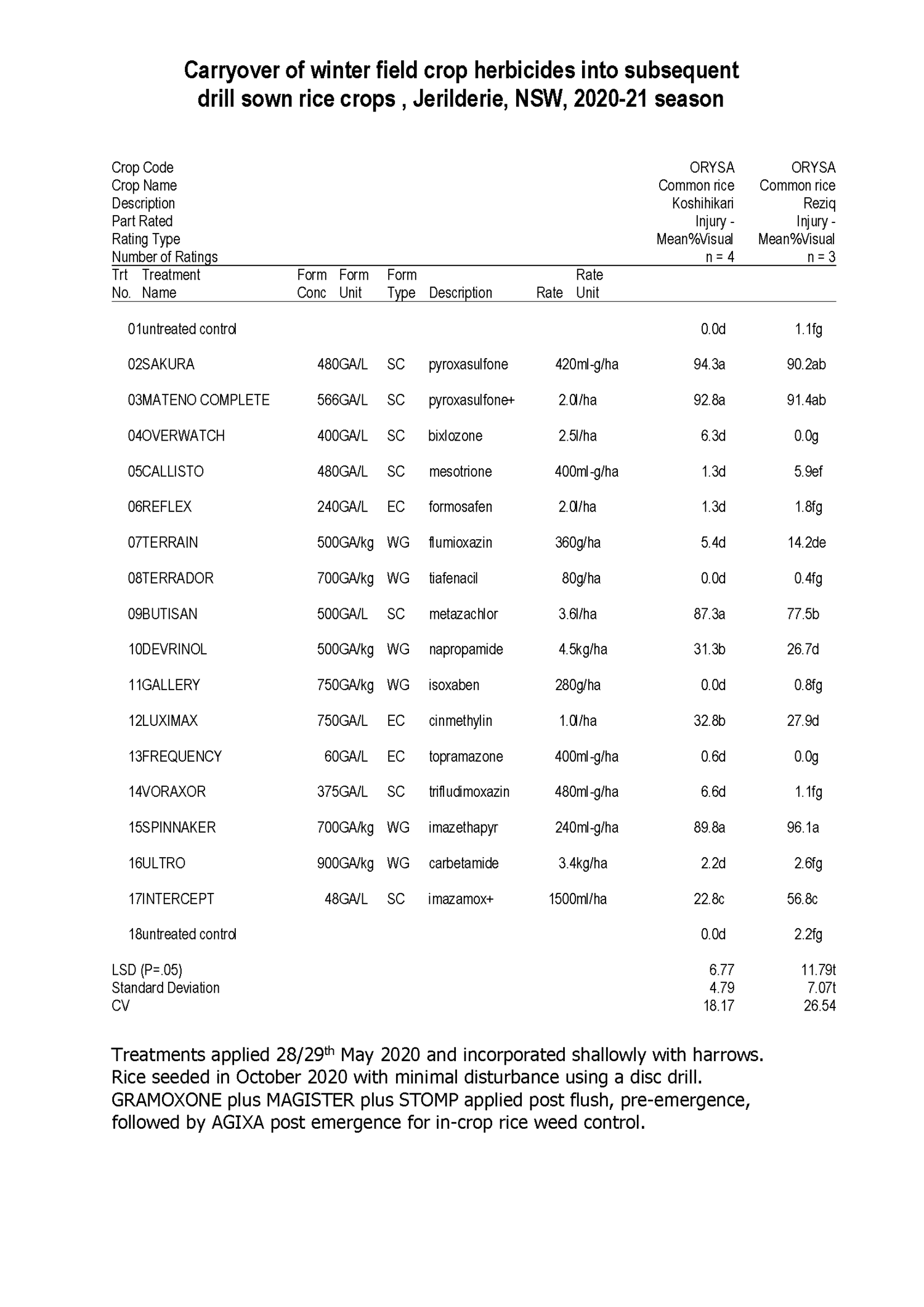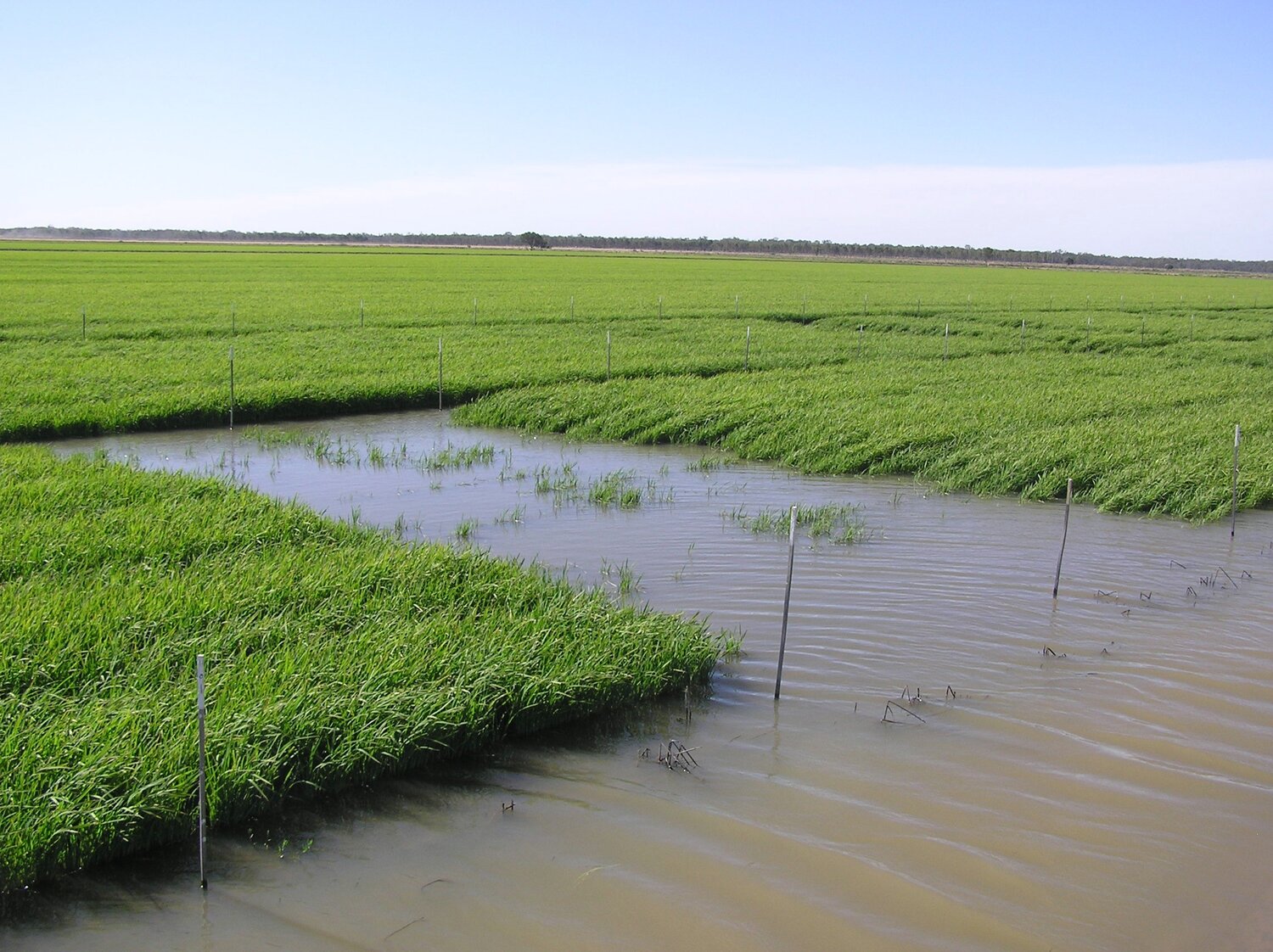Plan your winter crop herbicide usage carefully to avoid damage to following rice crops
Rice sown immediately after a prior cereal or broadleaf winter crop may be susceptible to injury from carryover of herbicide residues. The current rice crop protection guide has warnings in relation to carryover of Group A, B, C and K herbicides. Many new residual herbicide products are entering the market, with little experience regarding safe rice plantback recommendations. Carryover will be influenced by temperature, seasonal rainfall, soil pH, organic matter and soil texture, thus it is difficult to offer definitive answers to questions regarding the risk of damage to a following rice crop.
Historically, we have seen costly damage to a number of commercial rice crops after simazine and atrazine (Group C) applications in canola and also where aerial sown rice treated with LONDAX followed a GLEAN application in a prior cereal crop (ie 2x Group B in one year).
Previous trial work we conducted in 2015 highlighted the potential for moderate to severe rice injury after winter applications of INTERVIX, SAKURA, GLEAN, ATRAZINE, BOXER GOLD, SIMAZINE and LOGRAN. No or negligible injury was discernible with AVADEX XTRA, TRIFLURX, ALLY, STOMP and DIURON. In the most severe cases (INTERVIX and SAKURA) rice yields were depressed.
Last year we continued these field trials in collaboration with Rice Research Australia at Old Coree, Jerilderie by applying 16 different winter crop herbicides at twice (2X) their common use rate in two replicated studies at Old Coree. These sites remained an undisturbed chemical fallow for the winter season. Koshihikari and Reziq rice was drill sown in all plots in October 2020 with permanent water applied in December 2020. Results from seven visual ratings of rice biomass reduction are presented in the table below.
Biomass reduction ratings showed severe – moderate injury to rice from SAKURA, SPINNAKER, MATENO COMPLETE and BUTISAN. Moderate to minor injury was noted with INTERCEPT, DEVRINOL, LUXIMAX and TERRAIN.
OVERWATCH, CALLISTO, REFLEX, TERRADOR, GALLERY, FREQUENCY, VORAXER and ULTRO herbicides did not induce any significant injury to rice.
Results from these experiments highlight that ricegrowers need to be mindful of potential carryover effects when selecting herbicides for application to crops that precede rice.
In summary:
Group B, C and K winter crop herbicide products are the most the likely to induce injury to following rice crops. Refer to the Rice Crop Protection Guide and with local agronomists regarding specific guidance on this issue.
RICE INDUSTRY FIELD DAY RESULTS (TRIAL DATA)


Figure 1: Rice mortality due to winter crop herbicide carryover, December 2020, Old Coree, Jerilderie, NSW
Malcolm Taylor, Agropraisals Pty. Ltd.
Agropraisals Pty. Ltd.
ABN 79 006 574 938
Crop Protection Research and Development
283 Torgannah Road, Cobram, Victoria, 3644, Australia
Phone (61) 3 58 722 892
email: malcolmc.taylor@bigpond.com
